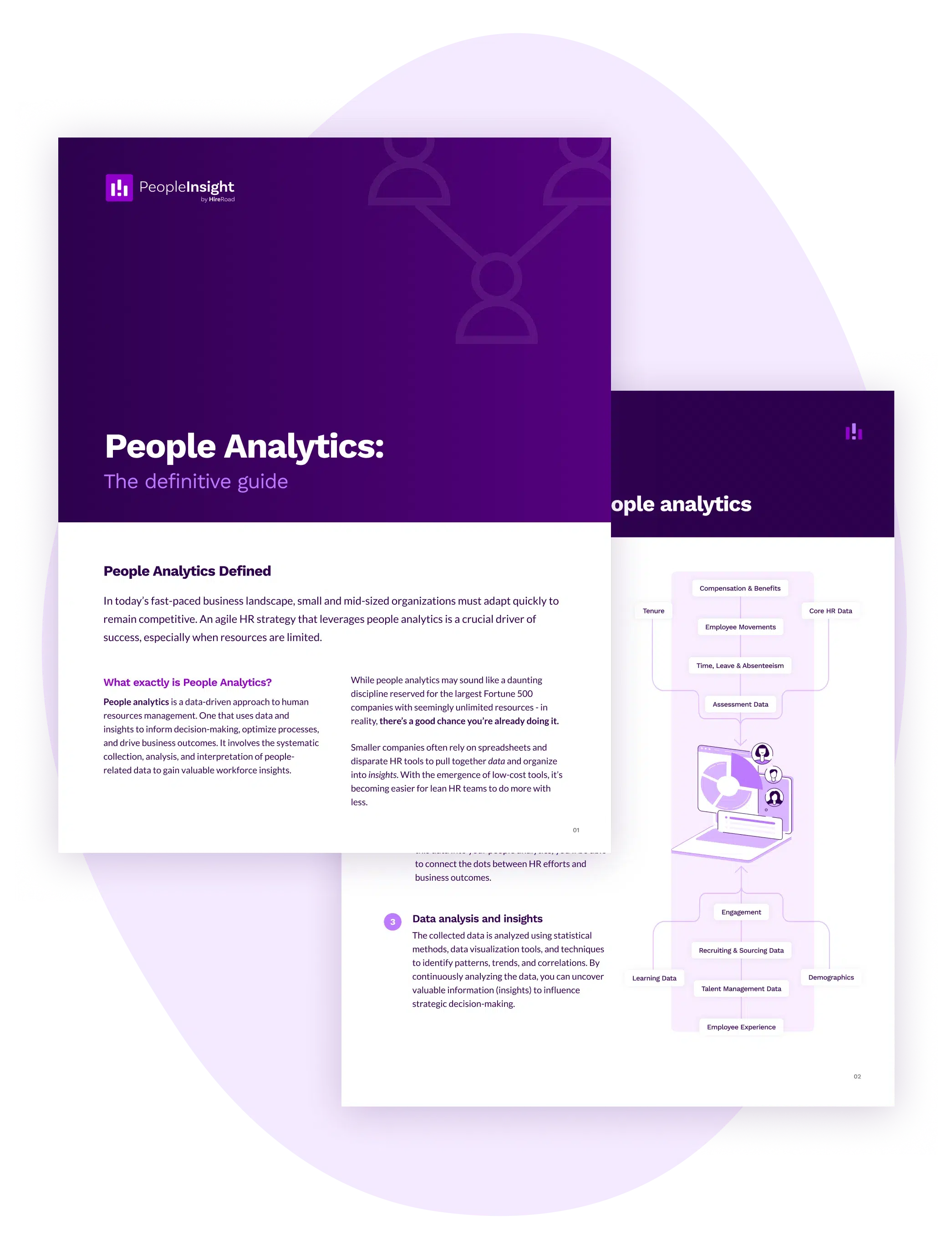E-Book
The Definitive Guide to People Analytics
HR teams are sitting on a goldmine of people data—but without the right approach, that data stays buried in spreadsheets, disconnected systems, or dashboards no one looks at. This guide is built for lean, ambitious HR and talent acquisition teams ready to unlock real insights—and real business impact.
Inside, you’ll get a plain-English explanation of people analytics, key tools and technologies to consider, common challenges (and how to overcome them), and examples of how to use analytics to shape smarter hiring, employee engagement, and more strategic conversations with the C-suite.
In this short guide, you’ll learn:
- The differences between transactional reporting and true people analytics—and why it matters
- What analytics tool is best for you, based on your size, budget, and goals
- How to connect your HR efforts to business outcomes like productivity, retention, and revenue
